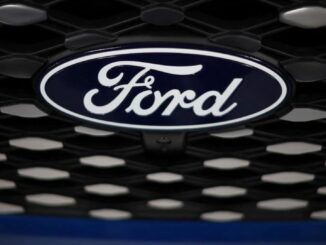
The infinite wisdom of the US legacy automakers never ceases to astound.
By Wolf Richter for WOLF STREET.
Ford today gave another signal in a series of signals – it’s planning to cut production of its F-150 Lightning by half in 2024 to just 1,600 trucks a week – that proves the point: Two years ago, Ford, GM, and FCA (owned by Stellantis) were 10 years behind Tesla. Today, they’re 14 years behind, and they’re in the process of throwing in the towel. Every executive from the CEO on down three levels should be fired on the spot. I’m furious. I have been waiting for years for the legacy automakers to put the heat on Tesla to knock it off its high horse.
But no. Instead of focusing on designing competitive EVs – cost-competitive EVs – and to build the supply chains needed to produce them, GM announced $10 billion in share buybacks two weeks ago, and Ford $5 billion in share buybacks, to kowtow to Wall Street and keep their shares from plunging further. The CEOs should be fired on the spot, or did I already say that?
Meanwhile, Tesla’s Model Y has become the #2 bestselling model in the US in 2023 through Q3, with a market share of 2.5% of all new light vehicles sold, according to registration data provided by Experian, only half a percentage point behind the #1 bestseller, the Ford F-150 internal-combustion-engine (ICE) version, with a share of 3.0%. With this growth rate, the Model Y is threatening to take the #1 spot from Ford’s ICE F-150 in a year or two, which would be a catastrophe for Ford.
In California, Tesla was the #2 automaker by registrations in Q3, behind Toyota, and far ahead of the other Japanese brands. The US legacy automakers are even further behind. The Model Y is the #1 bestseller by a wide margin in the state, and the Model 3 is the #2 bestsellers. And Rivian is surging up from nowhere.
Tesla’s deliveries jumped by 26% year-over-year globally in Q3, Rivian’s deliveries by 136%; and Polestar’s by 50%. The latter two are startups struggling to ramp up production. Rivian confirmed in its Q3 earnings call that it will likely hit its production guidance of 52,000 vehicles in 2023. There is no slowdown of demand in sight.
Rivian is threatening to outsell Ford’s combined EVs in 2024. Ford sold 20,365 F-150 Lightning this year through November, and 35,908 Mustang Mach-E, which are piling up on dealer lots. Including the retrofit E-Transit, Ford sold 62,460 EVs over the past 11 months. Ford is cutting production plans for 2024, while Rivian is furiously ramping up production.
In terms of their stocks: Rivian has long been seated in my pantheon of Imploded Stocks, and Tesla made it into my pantheon of Imploded Stocks a year ago – meaning shares plunged by 70% or more from their highs – but it has gotten back out of it this year. Rivian’s shares today are down 89% from their highs. Tesla’s shares are down only 43% and are still ridiculously overvalued. So the shares are not for me. Nor are the US legacy automakers; I have no idea why anyone buys their shares – maybe people chasing after the dividend yield that is now nearly as high as the yield of Treasury bills.
Tesla is highly profitable even after the price cuts – the old business axiom applies: the low-cost producer wins. And the startups Rivian, Polestar, et al. are supposed to lose a ton of money until production reaches certain levels, just like Tesla did.
Tesla’s price cuts x’ed out Ford’s strategy of selling overpriced so-so EVs. Now it needs to go back to the drawing board, designing more competitive EVs that can be produced at a lower cost so that they can be sold profitably at volume at a lower price. With its current models, it cannot cut the price enough because it’s already losing a ton of money on each EV it sells.
But instead, it decided to blow $5 billion on share buybacks to keep its shares from tanking further. Fire the whole executive team, or did I already mention that?
The average transaction price of all new vehicles is about $47,000 now. It’s outrageously expensive. And the price cuts that Tesla implemented are a breath of fresh air in this environment of constant price increases. Americans have gotten ripped off by the automakers for years.
FCA doesn’t have any EVs on the US market, just announcements.
GM has the old Bolt and Bolt EUV which sold well this year after the price cuts – a base Bolt goes for less than $27,000 before tax credits, or for about $20,000 after federal tax credits – turning 2023 into a record year for the models, with 50,000 deliveries through Q3.
But earlier this year, GM announced that it would kill the Bolt and Bolt EUV by the end of 2023, and that it would be the end of the Bolt. GM has no other EV in mass-production. It just has announcements in mass-production – and share buybacks. Then in July, it flipflopped; it wouldn’t be the end of the Bolt after all, there would be a new Bolt in the future, based on its Ultium platform, but until its whenever-arrival day, there would be no Bolt at all, and GM will just abandon this lower-priced EV segment to whoever wants it.
Tesla wants it, and now it’s working on a sub-$30,000 EV.
Tesla has another huge strategic advantage: It never spends a dime on advertising, while the US legacy automakers have to spend billions of dollars every year to push their ICE models and EVs, in addition to the billions they blow on share buybacks. The first Cybertrucks were just delivered, and the pictures and videos and articles were everywhere; and even the Wall Street Journal, which years ago has turned into a prime anti-EV rag, wrote about the Cybertruck, though its reporters weren’t even invited to the Cybertruck Delivery Event.
It doesn’t matter what you or I think about the Cybertruck; the crucial thing is that everyone has known about it for years, and people have been talking about it for years, and it has been all over the internet and the media, and Tesla never paid a dime to get this publicity – that’s a huge strategic advantage.
And Tesla doesn’t waste money buying back its own shares either.
And Tesla has another huge strategic advantage: it doesn’t have franchised dealers staffed by salespeople that don’t feel like selling EVs and actively torpedo EV sales in favor of ICE vehicle sales. And Tesla doesn’t have all the costs associated with running this network of potentially unwilling middlemen that all want to make their own profits and mess with the pricing.
Franchised dealers are protected by state franchise laws from automakers trying to sell directly to consumers. But Tesla was able to get exemptions in many states back when it was still a no-nothing, and when franchised dealers, who are a powerful lobby at the state level, still knew that EVs would never work and would never amount to anything, and that Tesla would never be a threat.
Ford blew a huge amount of money on promoting its Lightning before the first one rolled off the assembly line in April 2022, and then it continued to blow money promoting it, and there have been anecdotal stories of customers at dealerships being steered from EVs to ICE vehicles, and now it has to cut production plans in half, while Rivian is ramping up production in leaps and bounds, and while Tesla…. well, the Cybertruck will be a spectacle we’re going to watch, that’s for sure.
Ford is uniquely dependent on its F-series ICE trucks. It makes obscene profit margins on them, and anything that eats into sales of these trucks is going to be a big problem for Ford. There are four legacy automakers in the US that make full-sized pickup trucks, and their outrageous pricing is marked by oligopolistic behavior. So they set themselves up for disruption.
Tesla has another huge strategic advantage: It designed, built, and owns its own charging network, payment method, and app to work with its own vehicles, and the system is widespread and works.
So Ford and GM had to make deals with Tesla so that their customers will be able to use Tesla’s well-functioning network of Superchargers, because they didn’t build out their own networks, and because the third-party infrastructure they’re using is terrible and unreliable and deters buyers of their product. With EV charging, America is divided into two parts: Tesla’s network and everything else.
Maybe the US legacy automakers should just stick to making and selling overpriced ICE trucks and SUVs; maybe they should just abandon the EV market like they abandoned the sedan market, and instead keep borrowing billions to buy back their own shares, and watch their sales and market share go to heck, that’s something they’ve already gotten good at over the years.
Enjoy reading WOLF STREET and want to support it? You can donate. I appreciate it immensely. Click on the beer and iced-tea mug to find out how:
Would you like to be notified via email when WOLF STREET publishes a new article? Sign up here.
ENB Top News
ENB
Energy Dashboard
ENB Podcast
ENB Substack



